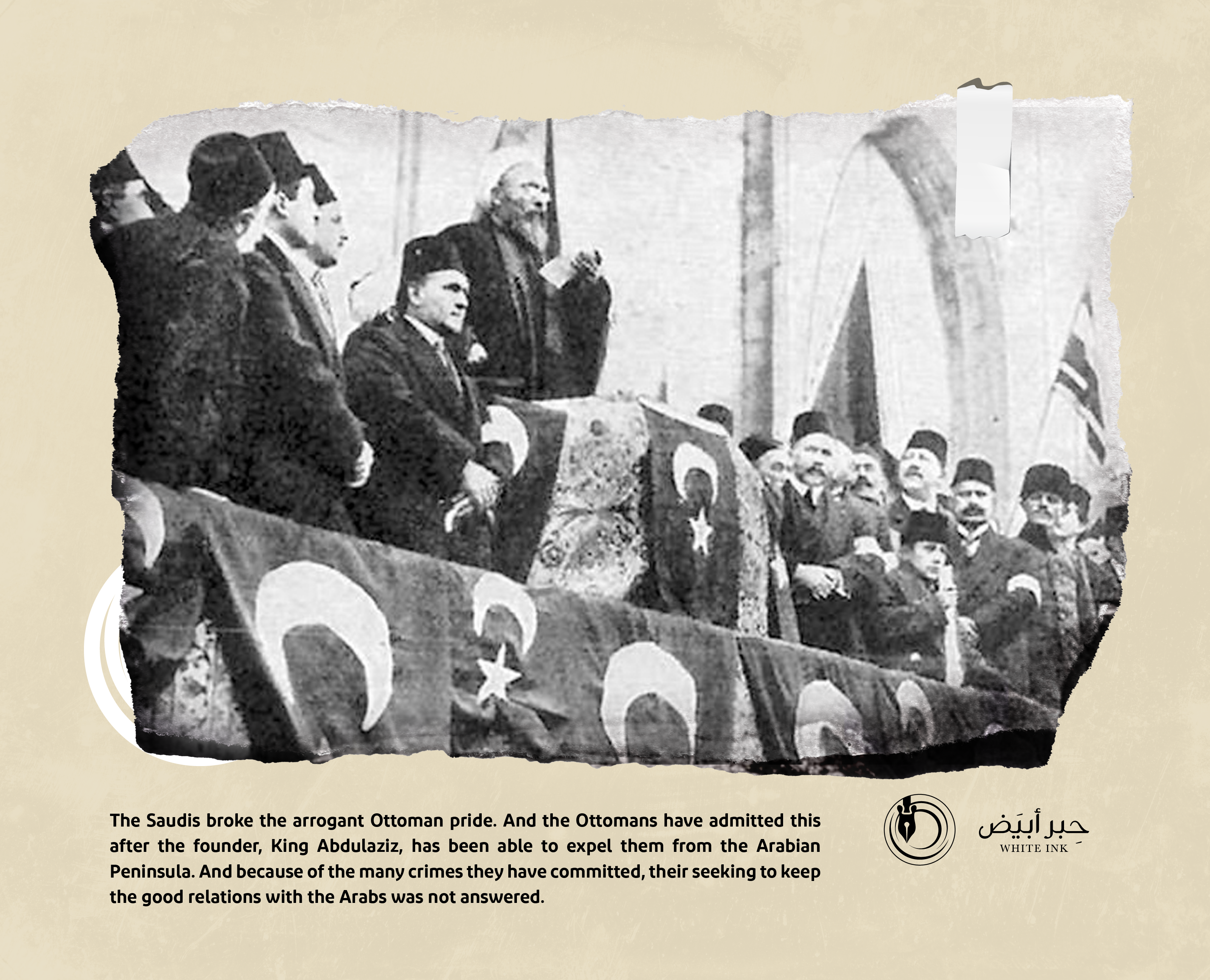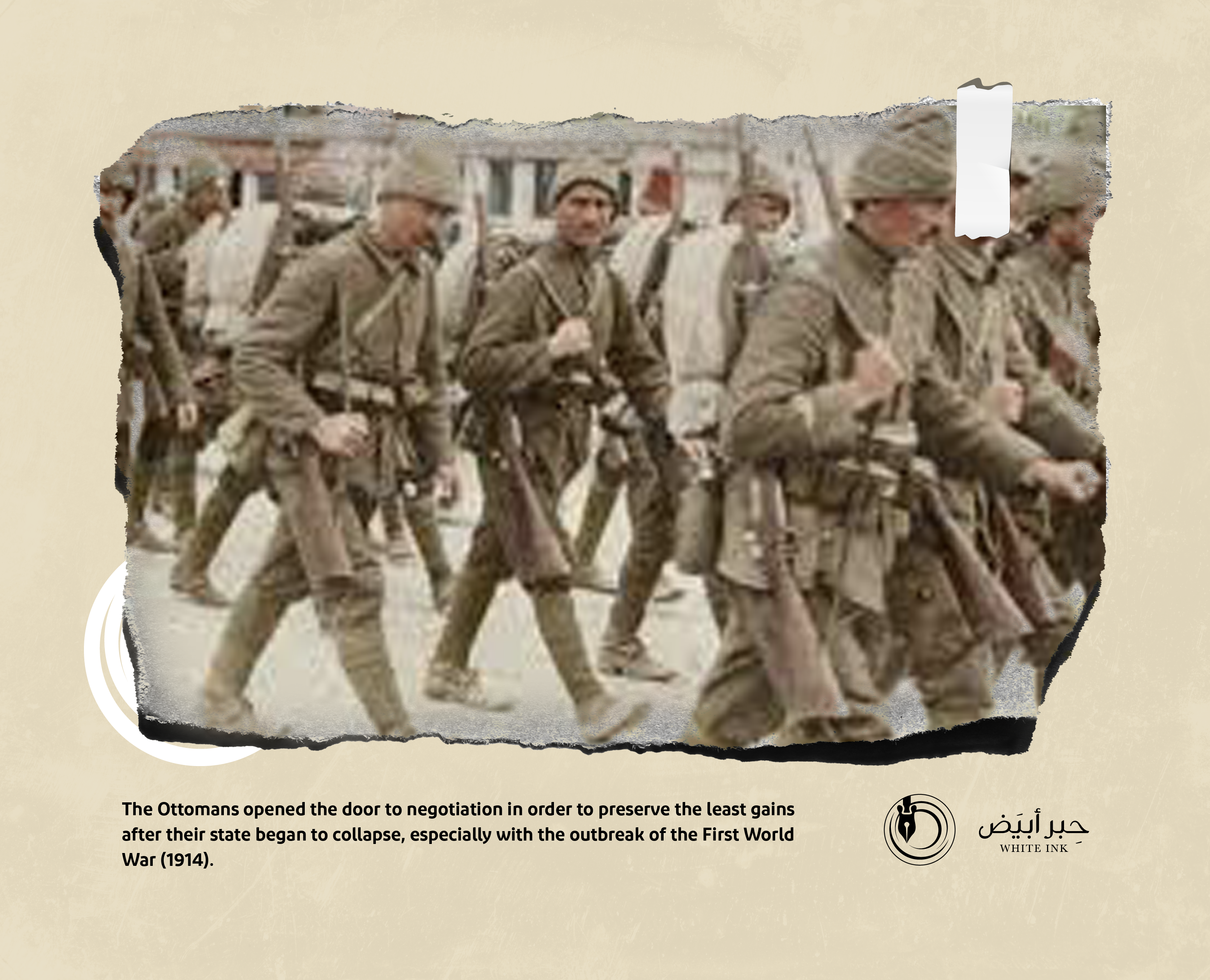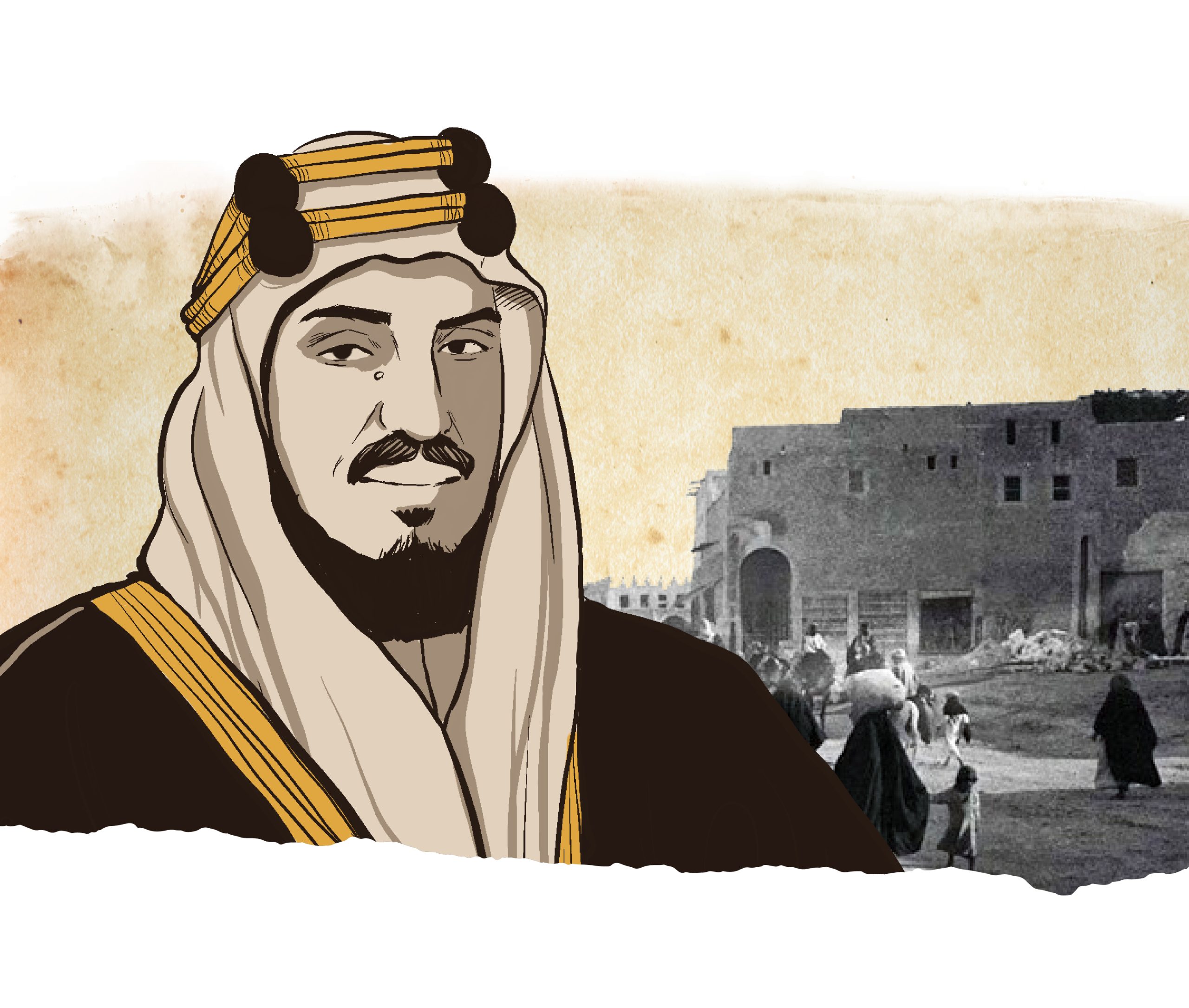
It was the result of the Ottoman chaos
King Abdulaziz put an end to the chaos of Al-Ahsa in 1913
With the beginning of the formation of Saudi political history, which began in the middle of the eighteenth-century AD (1744) with the establishment of the first Saudi state, Al-Ahsa was the national region, which represented the economic and commercial depth. Therefore, there were many colonial attempts that tried to control Al-Ahsa, but all of these attempts failed due to the strength of the national consistency of Al-Ahsa’s people, who were an obstacle in the way of the invaders.
It can be said that the strategic importance of Al-Ahsa made it a constant target for the colonial forces, which saw its subjugation as achieving two strategic goals, the first of which is to separate it from its national depth, and the other is to benefit from its natural resources and ports and exploit them in the expansion operations towards the rest of the Arabian Gulf regions. Therefore, the governor of Iraq, Medhat Pasha, expressed the motives behind the invasion of Al-Ahsa by saying: “If these areas do not benefit the state and do not help it, the formation of a Moutassarifiya in Al-Muntafiq allowing financial benefit from Qatif and Al-Ahsa which revenues alone amount to two hundred thousand riyals, shall be done”.
The beginning of the collapse of the Ottoman Empire (the sick man) was after its defeat against Italy and its preoccupation with the Balkan War, in addition to the inability of the Ottoman administrator in Al-Ahsa to maintain security. All of these factors prompted the people of Al-Ahsa to write to the founder, King Abdulaziz bin Abdulrahman Al Saud (may Allah have mercy on him), in order to intervene to put an end to the chaos in the region, and restore it to its Saudi national affiliation.
King Abdul Aziz was able to defeat the Ottoman forces in Al-Ahsa, but his political cunning made him adopt diplomatic tactics in order to avoid any Turkish attack coming from the coasts of Al-Ahsa. In terms of security, Al-Ahsa was a refuge for some saboteurs who practiced looting and theft with the blessing of the Ottoman chaos, so they made the city a haven to protect them from sabotage. This fact is confirmed by the reply letter of King Abdulaziz to the Ottoman Moutassarifiya, in which he stated that “the saboteurs looted the Arabs belonging to his clans, and the goal of his campaign was to recover these properties and return them to their owners”. He also stated that he was located twenty-four hours away from Al-Ahsa.
All Ottoman colonial attempts to separate Al-Ahsa from its national affiliation failed.

The security chaos that Al-Ahsa was suffering from was in full view of the Turkish Ottomans, who were unable to impose security in the region, and some of them even contributed to strengthening this deteriorating security reality. Therefore, the founder, King Abdulaziz, recovered Al-Ahsa with the help of its people who pledged allegiance to him in the legitimate way. After that, he sent to the Ottoman administrator and the military commander and informed them to surrender and accept the new reality. They agreed to this and stipulated that the sheikhs and notables of the city would write that they do not want the Ottoman forces to remain and that they prefer the mandate of Ibn Saud. They also stipulated that they, those with them, their families, their money, and all what they had of weapons, ammunition and military supplies of the government must be safe.
King Abdulaziz agreed to their first condition as it would confirm his sovereignty over Al-Ahsa and rejected the second. Thus, Al-Ahsa returned to its national affiliation again and returned as an essential part of the Kingdom of Saudi Arabia’s land.
King Abdulaziz recovered Al-Ahsa with the blessing and allegiance of its people.



- Amin Al-Rihani, The History of Najd and its Appendices, 4th edition (Beirut: Dar Al-Rihani, 1970).
- Hafez Wehba, The Arabian Peninsula in the Twentieth Century (Writing and Translation Committee, 1935).
- Khair Al-Din Al-Zarkali, The Arabian Peninsula in the Era of King Abdulaziz, 3rd Edition (Beirut: Dar Al-Ilm LilMalayin, 1985).
- Abdullah Al-Othaimeen, History of the Kingdom of Saudi Arabia, 12th Edition (Riyadh: Al-Obeikan Library, 2003).
- Muhammad bin Abdullah Al-Abd Al-Kader Al-Ansari, The beneficiary’s masterpiece of the Old and New History of Al-Ahsa, 2nd Edition (Riyadh: Knowledge Library, 1982).
- Medhat Pasha’s Memoirs, translated by: Youssef Kamal Hatata (Cairo: The indian Press, 1913).

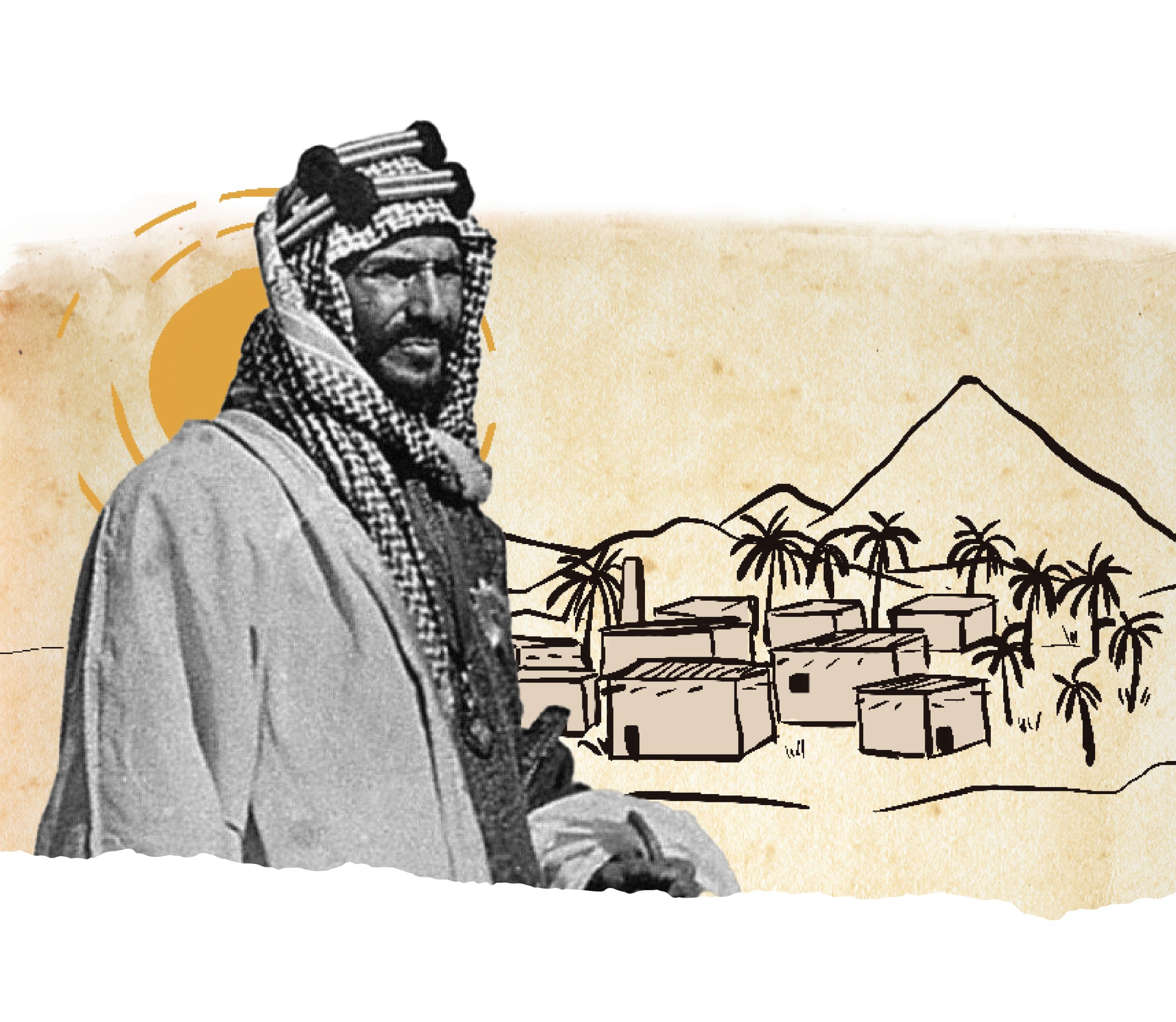
The Magnanimity of Kings and the Manners of the Great
King Abdulaziz expelled the Ottoman garrison from Al-Ahsa Without shedding a single drop of blood
King Abdulaziz’s restoration of Al-Ahsa is not, merely, considered a restoration of an authentic right, but rather a strategic turning point in the Saudi- Ottoman conflict. And, perhaps, Medina has been the first to revolutionize after Al- Ahsa. This was after what they heard about King Abdulaziz’s extraordinary triumph over the Ottoman colonizer in (1914- 1918). Therefore, the colonizing, Ottoman legend has been destroyed.
Al-Ahsa has always been, strategically, important for either the first or the second Saudi State throughout history. They managed to protect it as the English have reached the Persian Gulf, hence came the importance to protect Al-Ahsa. At the same time, the French were about to attack the Levant. All this happened while the Ottoman Sultan has become weak. The Ottomans were, easily, beaten, politically, and economically, to the extent that they opted for exchanging their lands. This what has become of the Ottoman Empire that, once, has colonized lands.
The Ottoman garrison in Al-Ahsa was part of that expansion, and an arm of the oppression of the Ottomans on the coasts of the Arabian Gulf, and therefore, the founder King Abdulaziz restored Al-Ahsa to settle the matter in therein. Due to the interruption of communication between the Turkish garrisons and the Wali of the Turks in Iraq, the garrisons turned into mere military components. Isolated, they were, in the middle of the desert, with no strategic value, especially with the arrival of news about the defeats of the central Ottoman state in the Balkans, Libya, Armenia, and on the Russian borders. But the Turks had, as they have always been, tried a lot to cause division and spread strive among the population of the city and the ones of the desert, in order to disperse their word, and to ensure that they remain under the control of the occupier.
Al-Ahsa has always been strategically important for Saudi Arabia to stand against foreign colonizers, either the Ottoman colonizers or any other colonizer.

But that made the situation even worse. The members of the Turkish garrisons became partners of the bandits, and they helped the thieves in the raids, and shared what they stole with them, while the local population have been very restless, suffering the most from that insecurity, unfair taxes, and the arbitrariness of the Ottomans in their dealings with them, and they yearned for salvation at the hands of the founder to restore security and safety and remove their hateful occupation.
King Abdulaziz read the data in front of him and the tools he possesed with great depth and cunning. He set his ambitious plan based on what can be achieved without adventure or rush, but through a military hierarchical construction, relying on three Main themes.
King Abdulaziz, deeply, analyzed the situation, and has put a well- thought strategy to achieve his goal, without rushing. Having his strategy depend on hierarchical military planning, he relied on three main ideas:
Turkish soldiers turned into criminals as they had to make use of their partnership with bandits and thieves to spread horror and conflict among the people.

First: Neutralizing the rebels who were unaware of the great and deep changes on the ground and the development of King Abdulaziz’s military power. Therefore, the founder headed his army to a site called Al-Arma, in the north of Riyadh, and stayed there, with the aim of summoning fighters who did not join the Unitary project due to lack of awareness and lack of political knowledge, and to keep them away from confronting his movements towards Al-Ahsa.
Second: Using cunning in dealing with the Ottoman enemy, when he approached Al-Ahsa, with his army, the Turkish administrator Ahmet Nedim sent to him, asking about his goal in coming to this side. And he replied that he wanted to invade his enemies, and added: “And I want to buy food to supply the army.” To confirm the trick, he actually sent some men to buy some dates and rice. It was an elaborate plan and an Unparalleled Arab cunning. As Prophet Mohamed, peace and prayers be upon him, said: war depends on deception. Hence, it was necessary to plan a fateful battle with such tactics that distract the occupier’s attention until the completion of the military effort.
Third: he paved the way, through restoring local alliances and the loyalty of families and residents to build confidence with them. He sent messengers to families and tribes that bear full loyalty to the founder and the honorable Al Saud before his arrival. The security that prevailed in the era of the two previous Saudi states, and indeed the founder’s, has facilitated his restoration and entry to Al-Ahsa without risking the safe population.
As for the importance of entering Al-Ahsa? The Saudi historian Abd Allah Uthaymin mentions it in his book The History of the Kingdom of Saudi Arabia in several points:
First: Because it was part of the first and second Saudi states, hence, he is restoring an authentic right.
Second: The occupation of the Ottomans in (1870) happened because of their deceptive manner, that is, they took advantage of the turmoil and disagreements colonized Saudi Arabia.
Third: the Ottomans took the side of the opponents of King Abdulaziz, hence, becoming an obstacle to his progress to recover his kingdom and liberate it.
Fourth: This area was necessary for Najd because it was the sea port for its trade.
Fifth: it was rich with its agricultural and sea-based resources, adding to its importance for trade ports.
Sixth: Entering it under his banner was a consolidation of his power against his opponents in the north and west of his country.
The founder, King Abdulaziz, reached Al Hofuf, the solid base of Al-Ahsa, and kept a large part of his forces outside; so that he would control it from within, and support would remain outside for any circumstance. Six hundred of his men marched in the direction of the Turkish garrison, cutting through the sword palms, and the plan required that King Abdulaziz, at the head of a selected group of the army, head towards an opening, prepared in advance, for his entry from the western wall that follows the Al-Umair Mosque, while the rest of his army would enter in small groups till all of the soldiers have entered, then, they should be divided into three groups. The first is located in the fence towers, and the second division is heading to open the eastern gate of Kut, which follows the market, while the third division should be ready to attack the Ottoman administrator in his headquarters if the need arises.
After that, King Abdulaziz sent a force of his army to Al Qatif, which was able to enter it without difficulties, and hence, restoring Al Qatif and Al Uqayr, and thus, all of Al-Ahsa was recovered.
The entire population pledged allegiance to King Abdulaziz on the Holy Qura’n and the Sunnah of His Messenger, and pledged to him to comply and obey, and in the meantime, the followers of King Abdulaziz had managed to control the entire Ottoman garrisons. The Ottoman commander and his garrison surrendered, asking King Abdulaziz for security for him and his army, so the chivalrous king secured him, to leave without his heavy weapons. And, indeed, he was sent to Al Uqayr and from there to Bahrain, and then to his country.


- Amin Al-Rihani, The History of Najd and Its Appendices, 4th Edition (Beirut: Dar Al-Rihani, 1970).
- Hafez Wahba, The Arabian Peninsula in the Twentieth Century (d.d.: Committee for Composing and Translating, 1935).
- Khair Al-Din Al-Zarkali, The Peninsula in the Era of King Abdulaziz, 3rd Edition (Beirut: Dar Al-Ilm for Millions, 1985).
- Abdullah Al-Othaimeen, History of the Kingdom of Saudi Arabia, 12th Edition (Riyadh: Al-Obaikan Library, 2003).
- Muhammad bin Abdullah Al-Abdul-Qadir Al-Ansari, Masterpiece of the Beneficiary on the History of Al-Ahsa in the Old and New, 2nd Edition (Riyadh: Al-Maaref Library, 1982).
- Medhat Pasha’s Memoirs, translated by: Youssef Kamal Hatata (Cairo: The Hindi Press, 1913).
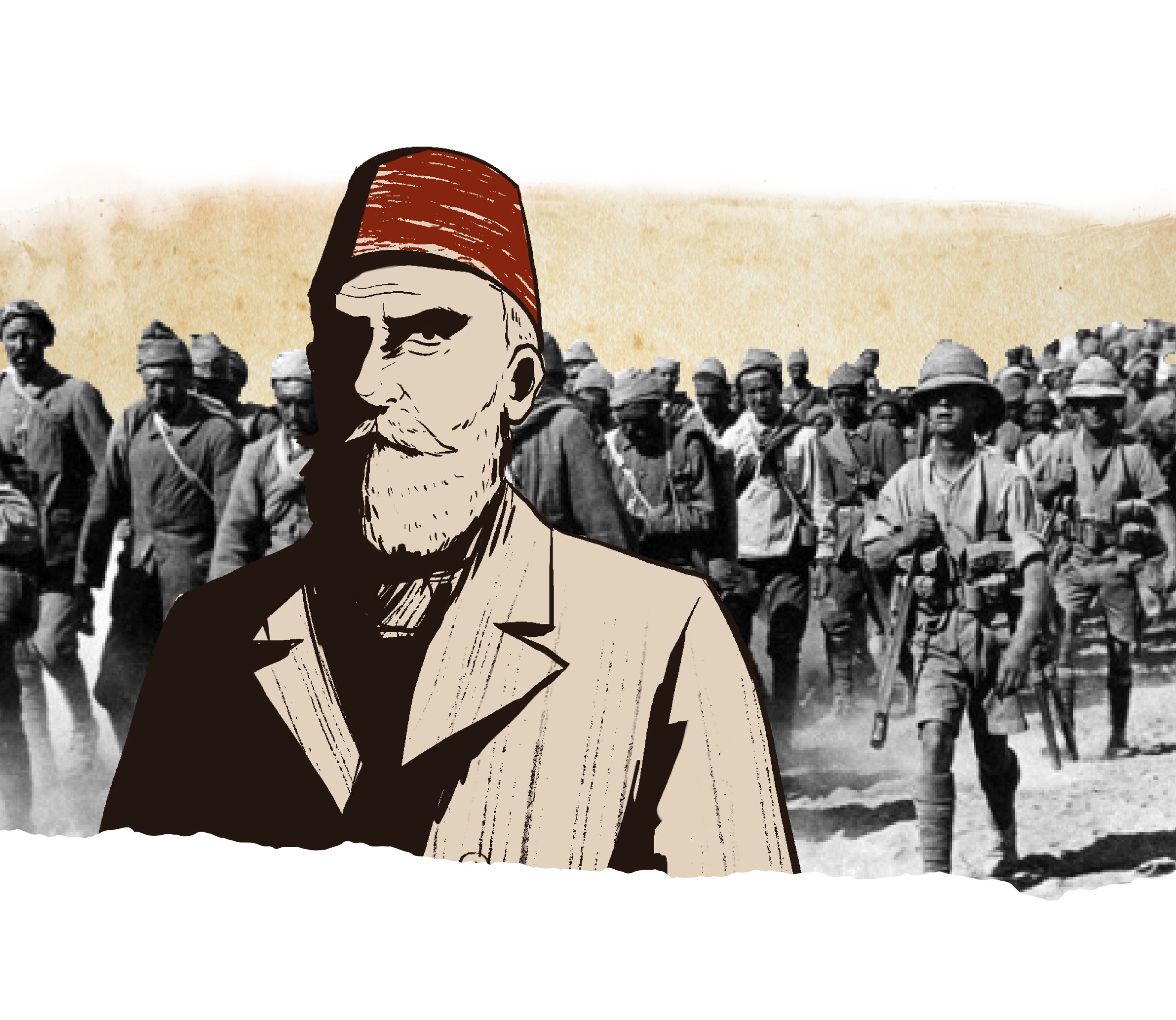
After defeating all of them in all military confrontations
The Ottomans were compelled to recognize the sovereignty of King Abdulaziz over all regions he recovered from them.
The founder, King Abdulaziz bin Abdulrahman Al Saud, was able to inflict the Ottoman forces and their allies in the Arabian Peninsula with major defeats, especially in the battles of Al-Bukairiyah and Al-Shanana. What caused the Ottoman Empire to be even more embarrassed in the Arabian Peninsula, is losing many of the parts under its occupation. As a result, the Ottoman Empire was forced to limit its presence and military operations in the middle of the Arabian Peninsula, and focus its efforts to fix the deteriorating situation in Yemen, for example, Istanbul issued orders to Ahmed Faydi Pasha to march to Yemen, and sent him military and logistical supplies to confront the rebellion in Yemen.
On the other hand, the leadership of the Ottoman garrison in the middle of the Arabian Peninsula devolved to the Ottoman commander Sedki Pasha, who was well convinced of the necessity of negotiating with King Abdulaziz, on the one hand, to calm the situation, and on the other hand, to save the Ottoman forces from their inevitable doom in the desert.
The Ottoman Commander, Sedki Pasha resorted to negotiating with King Abdulaziz Al Saud to save the Turks from inevitable doom.

Therefore, the Ottoman Empire resorted to a policy of negotiation with King Abdulaziz Al Saud, and some political parties intervened in the matter, and talks were held with the Ottoman governor of Basra, but without reaching a satisfactory result for King Abdulaziz. After a while, an agreement was made that the Ottoman forces would leave the middle of the Arabian Peninsula. The influence of King Abdulaziz Al Saud extended to the Qassim region.
Historians referred to the fact that, in 1906, Sultan Abdul Hamid II sent to King Abdulaziz Al Saud thanking him for his good treatment to the Ottoman Empire’s soldiers, and for allowing them to safely retreat to Iraq and Hijaz. The Egyptian historian, Mr. Rajab Haraz says: “In fact, ever since 1906 onwards, Abdulaziz Al Saud was the dominating central Arabian governor.
King Abdulaziz’s ultimate goal was to consolidate the foundations of the Saudi state, and to include the Arabian Peninsula under his banner. He succeeded in recovering Al-Ahsa from the Ottoman occupier, he also managed to expel them permanently; This enabled King Abdulaziz to reach the Saudi regions on the Persian Gulf, where he became a critical element in the international plan in the region before the outbreak of the First World War in 1914.
Many factors were the reason behind this incredible success, and the founder’s arrival in the Arabian Gulf, including the Ottomans’ preoccupation with the turbulent conditions in Yemen, as well as the instability of internal matters in some pro-Ottoman emirates, in addition to the internal conflict in Istanbul with the arrival of union and advancement to power, and the competition which the Ottomans faced from the international powers, especially after Germany – the enemy of England – was granted the privilege of building the Baghdad railway, by Istanbul, and what worsened matters was the Ottoman Empire’s preoccupation with the Italian-Libyan war 1911-1912, as well as the Balkan war 1912-1913.
King Abdulaziz Al Saud’s recovery of Al-Ahsa made him a critical element in the international plan in the Arabian Peninsula.

Therefore, the Ottoman Empire went back to the policy of negotiating with King Abdulaziz Al Saud, and succeeded in concluding a treaty of understanding with him, which included 12 articles on May 15 (1914), one of the most significant provisions of this treaty was the recognition of the sovereignty of King Abdulaziz Al Saud over the regions he had recovered, including the Saudi regions on the coast of the Arabian Gulf, especially in the ports of Qatif and Uqair, the Ottoman Empire also requested the support of King Abdulaziz in the event of an attack on it.
This is how King Abdulaziz’s run ended with the Ottoman Empire by recognizing his sovereignty over the middle of the Arabian Peninsula. It is well known that this treaty was not executed as the First World War soon broke out in 1914, this fierce war that continued until 1918, in the aftermath of that War, the state fell, The Ottoman Empire, and the modern state of Turkey was established on the ruins of the Ottoman Empire.


- Hafiz Wahba, Arabian Peninsula in the twentieth century (Without Date: Writing and translation committee, 1935).
- Khair Aldin Alzarkali, Peninsula in the reign of King Abdul Aziz, 3 Edition, (Beirut: Dar El Ilm Lilmalayin, 1985).
- Rajab Haraz, The Ottoman Empire and the Arab Peninsula (1840 – 1909), (Cairo: Without Publisher, Without Date).
- Abdullah Uthaymeen, History of the Kingdom of Saudi Arabia, 12 Edition (Riyadh, Obekan Bookstore, 2003).



